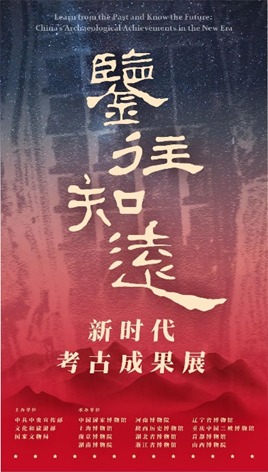
A major exhibition on Chinese archaeological discoveries, Learn from the Past and Know the Future: China’s Archaeological Achievements in the New Era, was officially launched at the National Museum of China on September 14, 2023. The exhibition is co-hosted by the Publicity Department of the Central Committee of the Communist Party of China, the Ministry of Culture and Tourism, and the National Cultural Heritage Administration, and co-organized by the National Museum of China and 11 Chinese museums which jointly built by the central and local governments.
The exhibition highlights the top ten archaeological discoveries in China since 2012, systematically showcasing nearly 400 latest archaeological finds from 43 cultural and archaeological institutions across China. The discoveries range from the Paleolithic era to the Song and Yuan dynasties (960–1368 CE), and span across a number of archaeology disciplines, including field archaeology, underwater archaeology, borderland archaeology and Silk Road archaeology. Notable discoveries featured in the exhibition include the Piluo Site in Daocheng county, Sichuan province, the Xiwubi Site in Jiang county, Shanxi province, the Western Zhou cemetery at Shigushan in Baoji city, Shaanxi province, and the Xuewei Tomb No. 1 in Dulan county, Qinghai province.
The exhibition, divided into four sections: “The Dawn of Civilization,” “Harmony among All,” “Unification of the Country,” and “Sharing a Common Future,” vividly recounts the history of human origins in China, the emergence and formation of the Chinese civilization, and the establishment and development of a unified multi-ethnic nation. It highlights the Chinese civilization’s significant contributions to world civilization, and provides a comprehensive view of the formation and development of the Chinese nation and Chinese civilization as a diverse and integrated whole, and the home and nation as a cohesive unit.
Source: National Museum of China
